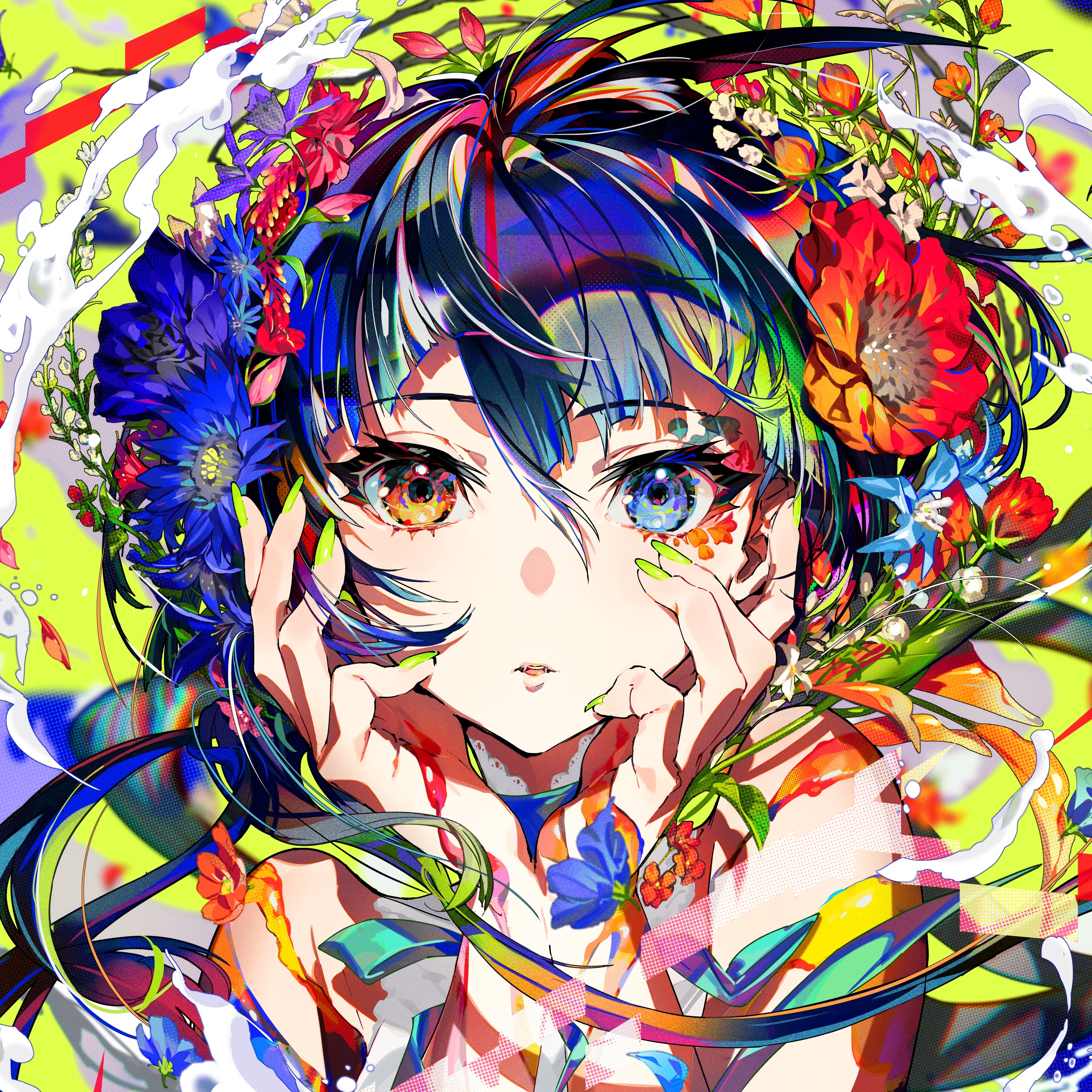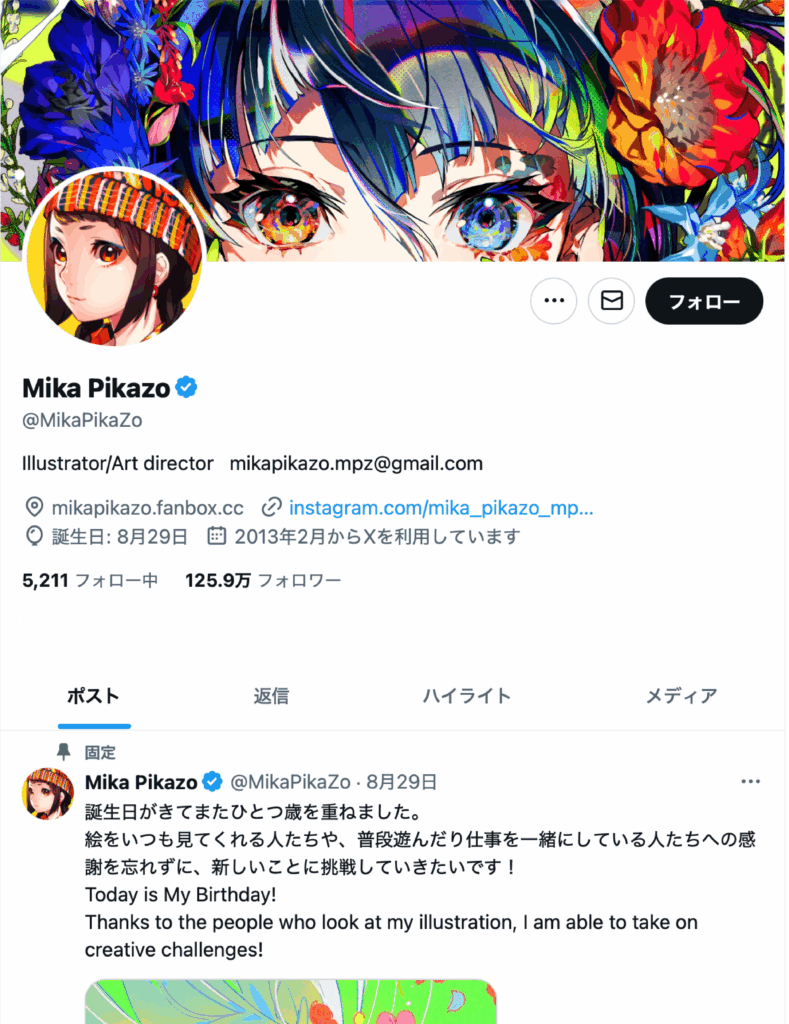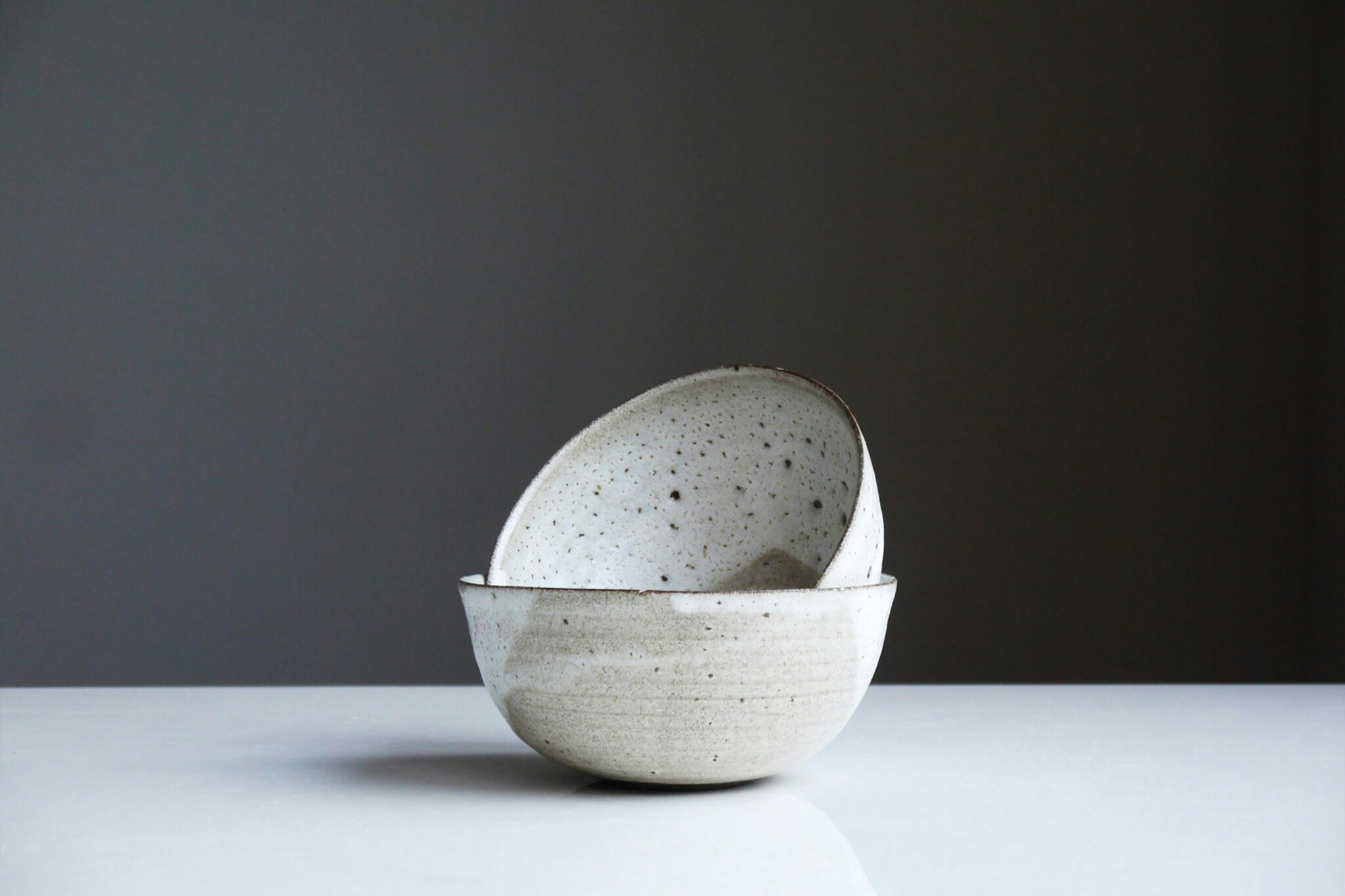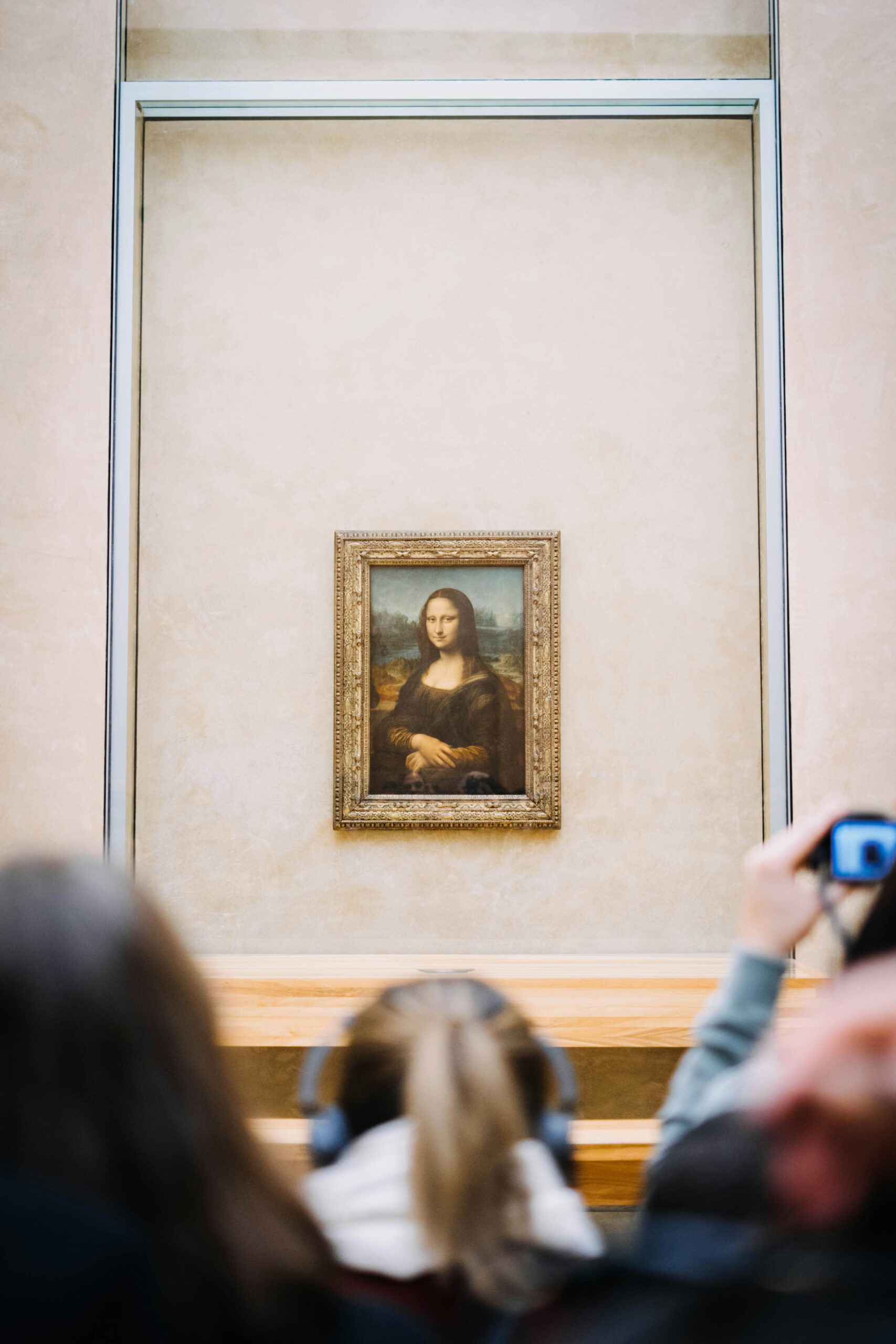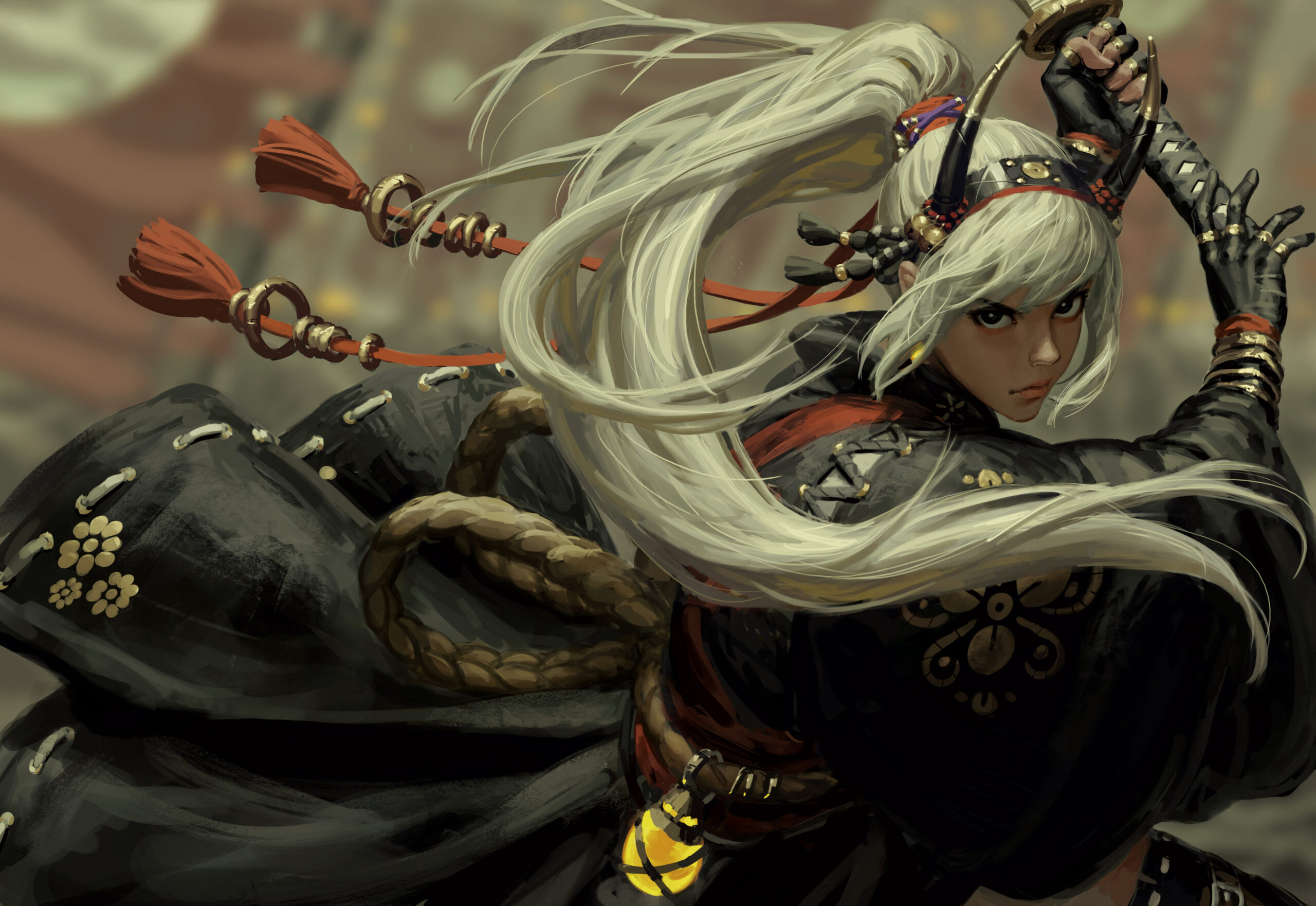From VTubers like Luna Kaguya and Hakos Baelz, to the illustrative tribute “Disney Collection by Mika Pikazo,” and even character designs for games like Fire Emblem Engage and Fate/Grand Order—in recent years, Mika Pikazo has expanded her activities beyond the framework of an “illustrator.”Looking at her body of work and her active schedule of solo exhibitions, it’s safe to say she is undeniably prolific. What is it that drives her to create so relentlessly?
Compared to the many wonderful interviews she has given in the past, what is on her mind now, in September 2025? We bring you our interview with Mika Pikazo in two parts.

Things That Change, and Things That Don’t
This is just my personal impression, but among the many illustrators and artists I’ve spoken with, you seem to have a particularly large number of interview articles. Is there perhaps an intentional reason for this?
Mika Pikazo (hereafter, M): I’m grateful to receive a lot of interview requests. If there’s one thing I’m conscious of, it might be the desire to keep a record of myself at different points in time. For example, if I compare an interview from three years ago with my thoughts now, they can be completely different. That applies to myself, to society, and to my surroundings. Of course, there’s an unchanging “core” to my creative principles, but I believe there are thoughts and expressions that can only be captured in a specific moment. I feel there’s meaning in leaving a record of “this is what I’m thinking right now.”
Is that something you also consider with your posts on X and Instagram?
M – Until now, I haven’t really posted much about my private life on social media. I’ve tried to avoid saying anything negative or even just sharing my everyday feelings, but that’s something I’d like to do more of going forward. The truth is, I love to talk. When I’m with creator friends, I’m often talking the entire time we’re working. I honestly have enough thoughts to fill up all 140 characters on X every time I post (laughs).
Is there a reason for this change of heart?
M – I used to believe that the most important thing for a creator is to put out work. It’s like how a restaurant’s job is to serve food, and the meaning is in serving delicious food, you know? But I’ve come to think that I need to communicate more with words about the act of “drawing pictures.” Of course, I plan to continue drawing a lot, but I also have a desire to convey my thoughts on why I created a certain piece, or to share the things that I love.
A Pen Name That Became a Real Name
In a past interview, you mentioned that you felt a sense of dissonance with the phrase “my authentic self” and that you’d rather people see your “constructed self.” The Mika Pikazo I’m speaking with now—which would she be, the authentic self or the constructed self?
M – I think they’re starting to blend together now. In the past, I felt like there was a clear separation between my public and private personas, but now they’ve begun to merge. The personal side of me and the “Mika Pikazo” side don’t feel that different anymore.

So the gap between your public and private selves has closed?
M – Honestly, I spend more time as Mika Pikazo, to the point where if a delivery comes to my house and the person on the intercom says my real name, I’m sometimes startled, like, “Oh, right, that’s me” (laughs). I’m always thinking about creative things, and I feel like I can’t live without them. People often tell me that my illustrations make them feel energized, which makes me very happy, but I myself am a very anxious and constantly negative person. But it might be precisely because that anxiety is so strong that I create, and why I want to draw pictures that radiate power. Taking breaks is actually scarier for me; I’m afraid of the time I’m not engaged in creation.
If You Dive Deep, You’ll Find Your Kin
I think I understand that you release your anxiety through creation. In another interview, you spoke about the influence of Alexander McQueen, the fashion designer for labels like Givenchy. My impression of him is of someone who continually released avant-garde work by thoroughly confronting his own inner self, so perhaps his artistic expression wasn’t purely for catharsis. Do you resonate with that aspect as well?
M – When I hear stories about various artists, I’m not that drawn to the ones where people say, “Oh, they were such a good person.” I’m more drawn to stories about those who are too passionate about their work, too stoic, too obsessed—to the point where they become strange. Hearing those stories gives me a great sense of relief. I’d think, “Ah, thank goodness.” There are people who see that and think, “That’s why they’re able to create such wonderful work.” I have times when my own thoughts go too far, and even if I’m in a mental state that, from an outsider’s perspective, looks like something I should just quit, I can’t help but think and hope that there’s something to be found by pushing through to the very end.
Have you ever faced a point of a “deadline”—a moment where you felt that if you kept struggling and confronting something, you wouldn’t be able to come back, that you would lose your mind?
M – I think I’m just starting to enter that phase now. It’s not that I’m mentally ill, but when I hold exhibitions or confront the concepts of what I want to do, I have to chip away at myself. It feels like I’m carving out things that are inside me, one by one. In that process, I also feel my desired creative expression being sharpened and refined. Just as I said earlier that “I get anxious when I’m not drawing,” my entire day, my entire life, becomes so saturated by it that I sometimes start to judge everything else based on whether or not it can be incorporated into my creative work. I’ve truly felt recently that I’ve entered that kind of space.
You once said that you thought McQueen “lived a wonderful life as a creator.” What does the ideal life for Mika Pikazo look like now?
M – My feeling right now is… I want to be drawing until the day I die of old age. I want to still be drawing when I’m 70 or 80. Until the very end.
Until the day I die. McQueen crossed that point of a dealline and didn’t come back.
M – In the movie, it was depicted that McQueen took his own life due to a combination of overwork and personal tragedies… I believe that suicide is something you should never do. But when you’re in extreme pain, it’s possible to have such thoughts, and no matter how much people around you say it’s wrong, the person in the midst of that suffering is seeing things from a different perspective. They might think, “There’s no point in me being alive.” If a friend of mine were in that state, I would absolutely try to stop them and tell them it’s not right, and I’d want to listen to them talk for as long as it takes to find a way to ease their pain even a little… But McQueen, until the very end, wove his own inner self into his work. It contained a catharsis akin to madness, and he created a form of expression that others could not reach. I have respect for that stance. But… I don’t know. Personally, my belief that suicide is wrong doesn’t change. As a fan of his work, there’s a part of me that just wanted to see more, and I get courage from repeatedly viewing the finite collection of works he left behind. So in that sense, too, I just want to… I want to keep drawing forever.

The Exhibition Begins Before You Even Arrive
Do you have any hobbies outside of drawing? Even on your days off, is it really just all about art?
M – There are times when I feel like I need more input, so I’ll travel, go to museums, or try things I wouldn’t normally do, but I don’t want to do anything that’s disconnected from my creative work. In my daily life, I lack initiative and I’m a total coward, but the moment something connects to my creativity, I’m immediately like, “Let’s go!” “Let’s do it!” (laughs).
When you seek out that input, is it to find specific information, or more to instinctively absorb the feeling?
M – It’s both. Especially when I’m doing an exhibition, I often simulate or imagine what my audience is feeling as they come to see the show. I visit various other exhibitions for reference. For example, for my exhibition “ILY GIRL” two years ago, before the concept was even decided, I walked to the venue from several different train stations to imagine the visitors’ journey and feelings. I thought a lot about what they might be hoping to see and experience on their way—were they happy, were they anxious, were they just excited for a fun day in Harajuku?

You think about it to that extent?
M – I do. I think about what it would be like if they came first thing in the morning, or in the evening. I try to deeply explore how the exhibition might look and feel from all these different approaches.
Have you ever felt completely stuck? A time when you thought, “I can’t solve this on my own”?
M – There was one time I had a major mental breakdown. At that time, there’s a producer at a certain music company I’ve always respected________________.
In this first part, Mika Pikazo spoke deeply about her approach to creation and the relationship between her anxiety and her expression.In the second part, we will dig down further into the challenges she wants to take on next, and the future she envisions beyond her continuous creation.
